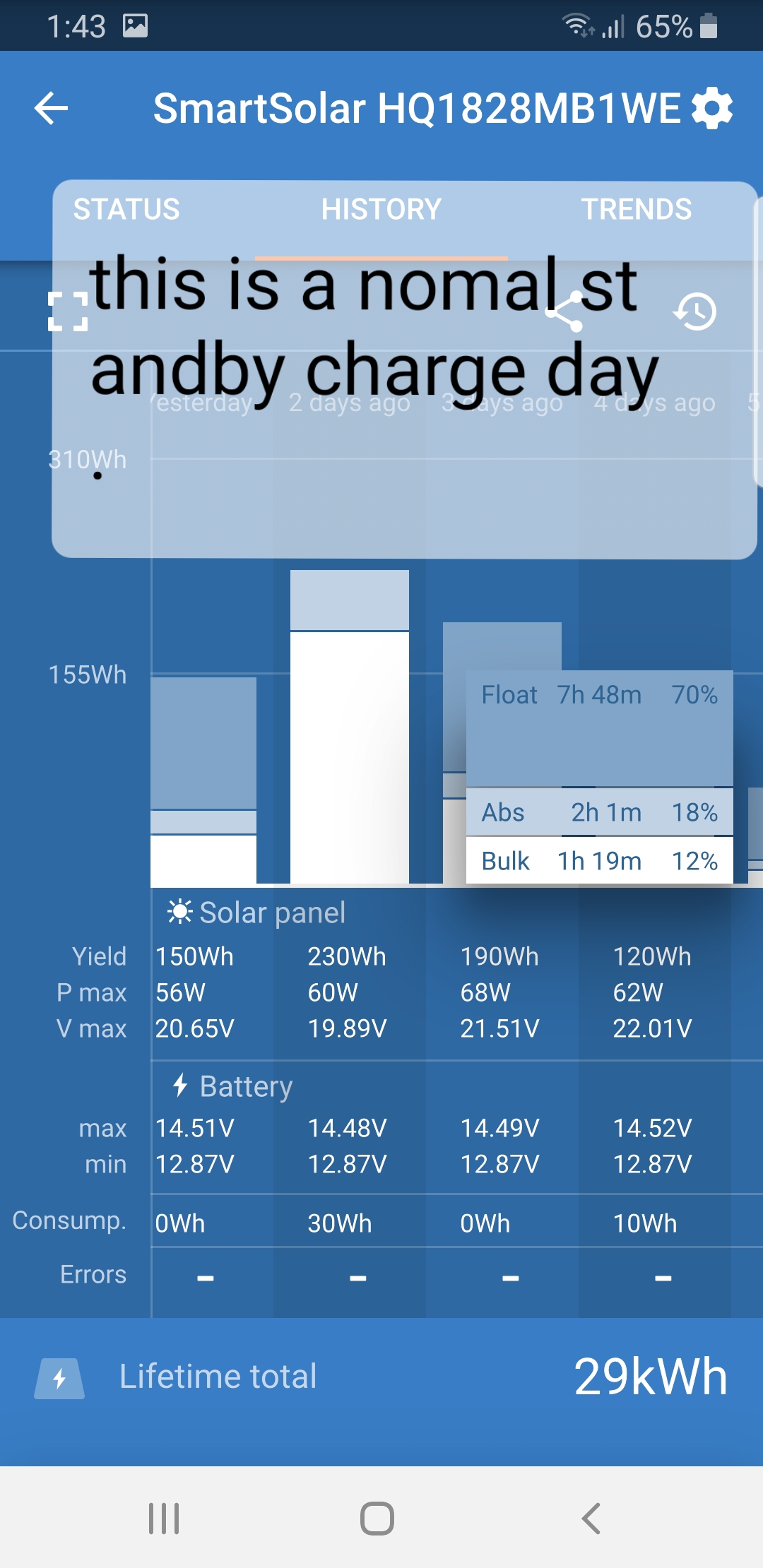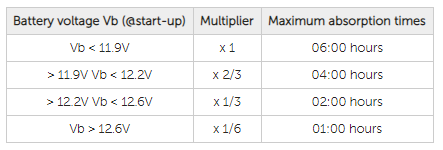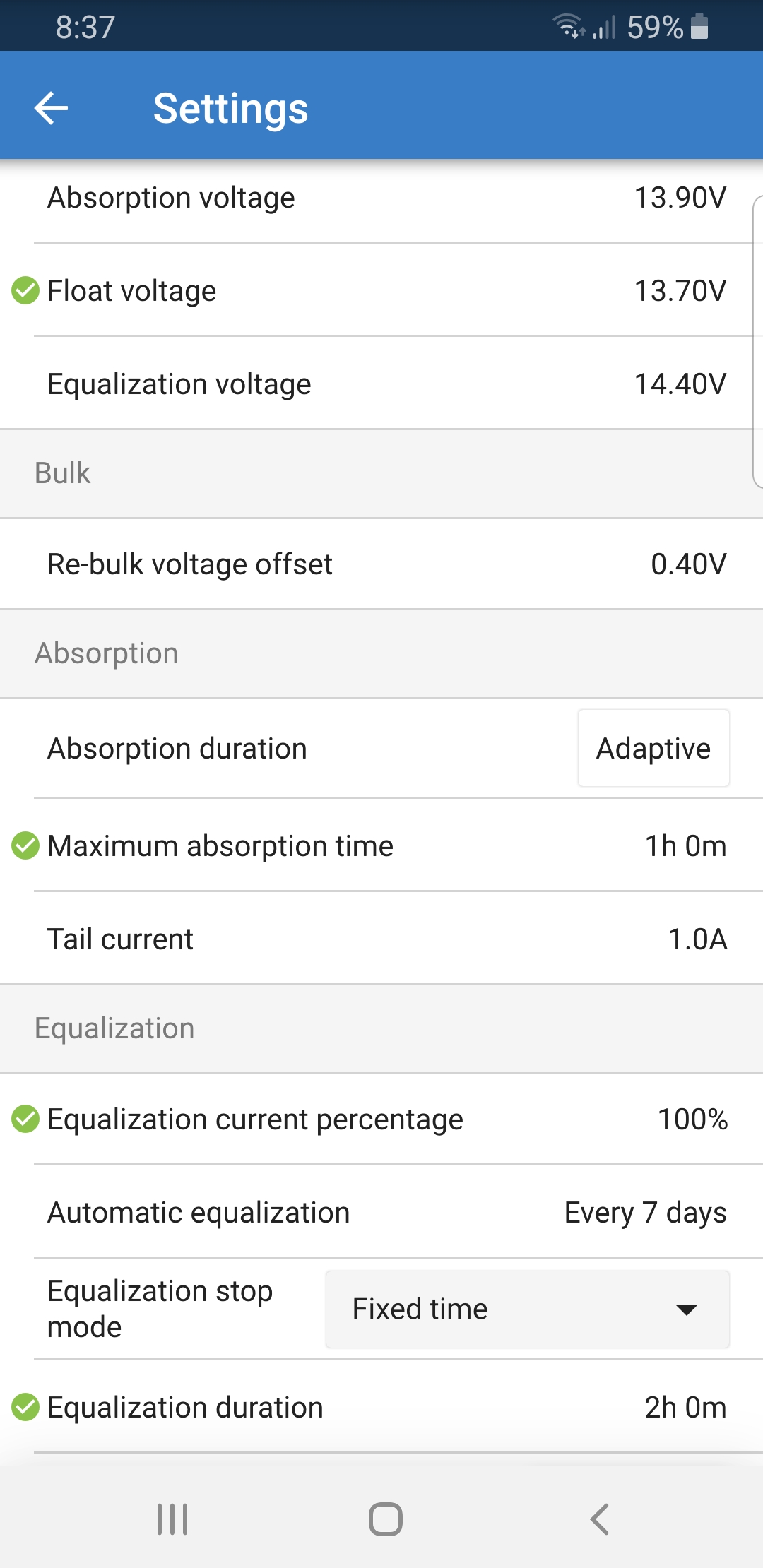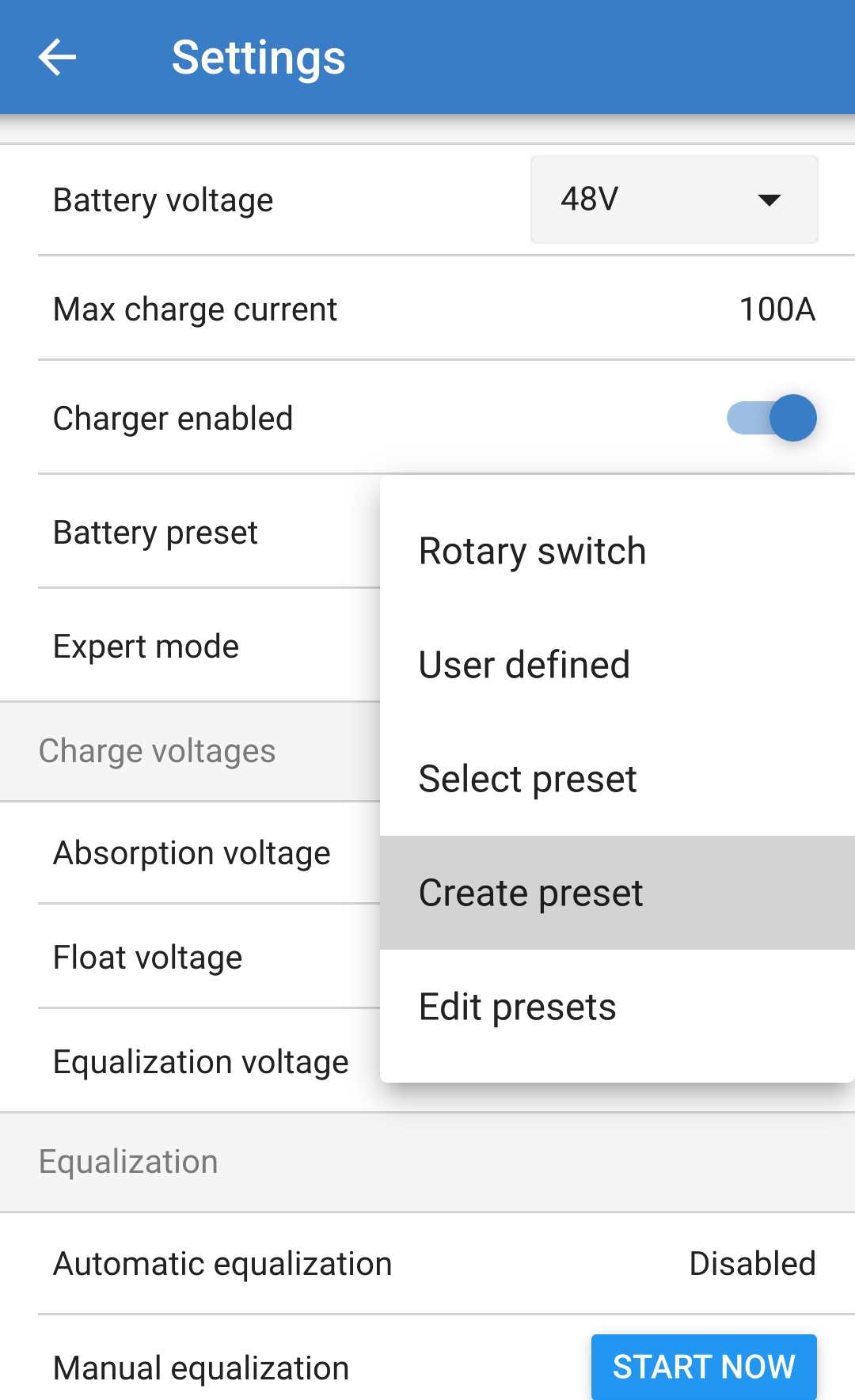
 Since the last update V1.42 the charging seem wrong in particular bulk and absorption, the system is in standby mode in my truck. Previously I had bulk charging for quite a few hours and today I have absorption far to long. I dont know how to fix this.
Since the last update V1.42 the charging seem wrong in particular bulk and absorption, the system is in standby mode in my truck. Previously I had bulk charging for quite a few hours and today I have absorption far to long. I dont know how to fix this.
 Attached picks taken at 1.30pm.
Attached picks taken at 1.30pm.




